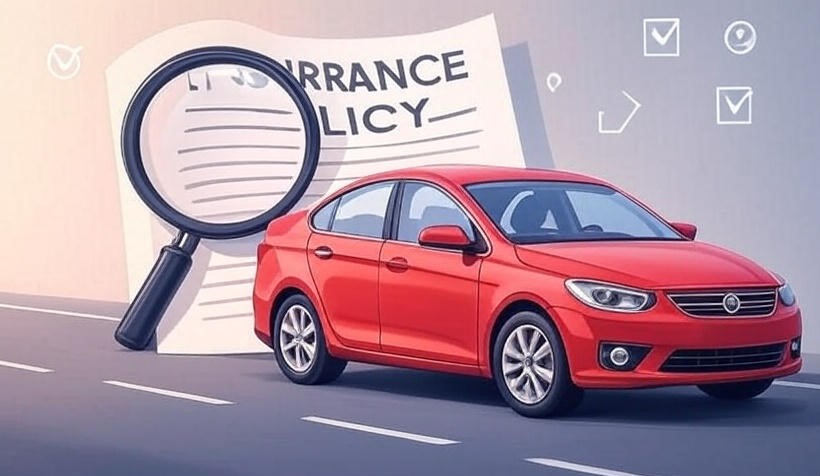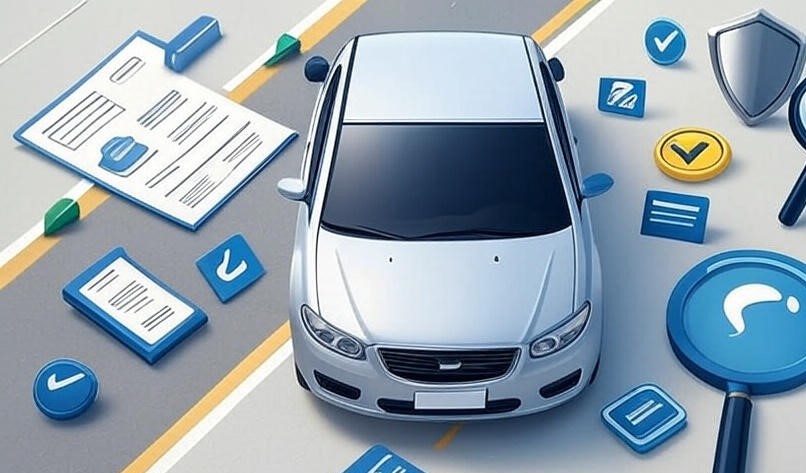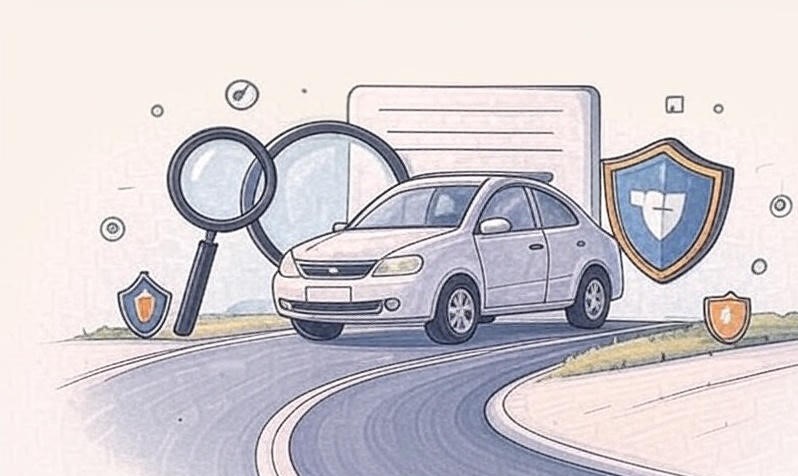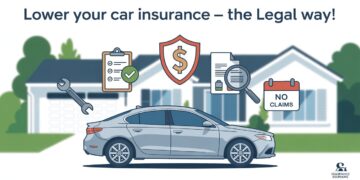Auto insurance is something every driver knows they need, but few people truly understand until they’re forced to use it. Policies are filled with technical terms, coverage options, and numbers that may feel intimidating at first glance. Yet, without proper coverage, one accident could leave you financially devastated.
This article, Understanding Auto Insurance: A Beginner’s Guide, is written to simplify the process. We’ll cover everything from the basics of what insurance is, to the different types of coverage, how insurers calculate premiums, common mistakes to avoid, and smart ways to save money. By the end, you’ll be equipped with the knowledge to confidently choose a policy that fits your lifestyle and protects your future.
What Exactly Is Auto Insurance?
At its core, auto insurance is a financial safety net. When you purchase a policy, you’re essentially entering into an agreement with an insurance company: you pay regular premiums, and in return, the insurer helps pay for losses caused by accidents, theft, or other covered events.
Without insurance, you’re responsible for paying damages out of pocket—not just to your own vehicle but potentially to other drivers, their property, and even medical expenses. A single accident can easily cost tens of thousands of dollars, which is why most states legally require drivers to have coverage.
Think of insurance as protection not just for your car, but for your financial stability.
Why Auto Insurance Is So Important
Legal Protection
Most U.S. states require drivers to maintain a minimum level of liability insurance. Driving without it can result in fines, suspension of your driver’s license, or having your car impounded.
Financial Security
Car repairs, hospital bills, and lawsuits can drain your savings. With insurance, those expenses are shared with your provider, preventing financial hardship.
Protection Beyond Accidents
Comprehensive policies don’t just cover collisions. They may protect you from theft, fire, natural disasters, and even falling tree branches.
Peace of Mind
Knowing you’re protected allows you to focus on driving, rather than worrying about the “what ifs.”
Types of Auto Insurance Coverage
Auto insurance isn’t one-size-fits-all. Here’s a closer look at the major types:
1. Liability Coverage
-
Bodily Injury Liability (BIL): Covers medical costs, rehabilitation, and sometimes lost income if you injure another person in an accident.
-
Property Damage Liability (PDL): Pays for repair or replacement of another driver’s vehicle or property.
This coverage is mandatory in almost every state, though minimum limits vary.
2. Collision Coverage
Collision insurance pays for repairs to your vehicle after a crash, even if you’re at fault. For instance, if you accidentally hit a guardrail, this policy helps cover your car’s repair costs.
3. Comprehensive Coverage
Covers non-collision-related damage. Examples include theft, vandalism, hail, fire, or damage from hitting a deer. It’s especially valuable for newer vehicles.
4. Personal Injury Protection (PIP) / Medical Payments (MedPay)
-
PIP: Covers medical expenses, lost wages, and sometimes services like childcare if you’re injured in an accident. Required in “no-fault” states.
-
MedPay: A similar but more limited option available in certain states.
5. Uninsured/Underinsured Motorist Coverage (UM/UIM)
If you’re hit by a driver who doesn’t have insurance—or not enough coverage—this policy steps in to pay for damages and injuries.
6. Gap Insurance
If your car is leased or financed, gap insurance covers the difference between your car’s market value and what you still owe on the loan if it’s totaled.
7. Optional Add-Ons
-
Roadside Assistance for towing and flat tires.
-
Rental Reimbursement if your car is being repaired.
-
Custom Equipment Coverage if you’ve upgraded your car with expensive features.
What Affects the Cost of Your Premium?
Insurance companies weigh several risk factors before setting your premium:
-
Age & Gender – Younger drivers (especially under 25) pay more due to higher accident rates.
-
Driving History – Accidents, speeding tickets, or DUIs will drive your rates up. A clean record can qualify you for discounts.
-
Location – City drivers often face higher premiums due to traffic density, theft risk, and accident likelihood compared to rural areas.
-
Type of Car – Luxury cars and sports models cost more to insure due to higher repair costs and theft risks.
-
Annual Mileage – The more you drive, the higher your risk, and thus, your premium.
-
Credit History – In many states, credit score is factored into premiums. Insurers argue that responsible credit behavior correlates with safe driving.
-
Coverage Levels & Deductibles – More coverage and lower deductibles equal higher premiums.
Steps to Choosing the Right Policy
Step 1: Know Your Needs
Ask yourself:
-
Is my car old or new?
-
Do I commute long distances daily?
-
Can I afford higher premiums for better protection?
Step 2: Shop Around
Never settle for the first quote. Use comparison websites and talk to agents directly. Prices can vary by hundreds of dollars annually between providers.
Step 3: Evaluate Coverage Options
Don’t just look at price. Ensure your coverage limits are high enough to realistically protect you in case of a serious accident.
Step 4: Check Insurer Reputation
Research claims-handling experiences, customer service ratings, and financial stability through agencies like A.M. Best.
Step 5: Reassess Regularly
Review your policy each year. A new car, marriage, or moving to a new ZIP code could all change your insurance needs.
Common Mistakes Beginners Make
-
Choosing Minimum Coverage Only – While cheaper upfront, it may not be enough if you’re in a serious accident.
-
Forgetting to Update Policies – Adding a teenage driver or moving states requires a policy update.
-
Misunderstanding Deductibles – A low deductible increases premiums. A high deductible lowers them, but you’ll pay more out of pocket.
-
Skipping Discounts – Many people forget to ask about good driver, student, or bundling discounts.
-
Not Reading the Fine Print – Exclusions and limits matter. Always check what isn’t covered.
How to Save Money on Auto Insurance
-
Bundle Policies – Combine home and auto insurance for discounts.
-
Maintain Good Credit – Where allowed, insurers reward responsible financial behavior.
-
Choose a Higher Deductible – Only if you can afford the out-of-pocket risk.
-
Drive Safely – Clean driving records are rewarded with lower rates.
-
Install Safety Devices – Anti-theft alarms and advanced safety systems can lower premiums.
-
Ask About Special Discounts – Some companies offer deals for military personnel, seniors, or hybrid car owners.
The Claims Process: What to Expect
Filing a claim can be stressful if you don’t know the process. Here’s how it generally works:
-
Report the Accident – Contact your insurer as soon as possible. Provide details, photos, and any police reports.
-
Damage Assessment – An adjuster evaluates the extent of vehicle damage and medical costs.
-
Coverage Review – The insurer confirms what your policy covers.
-
Settlement Offer – You’ll receive a payout or direct repair service depending on the terms.
-
Repairs or Replacement – Funds are issued, or repairs are handled through an approved shop.
Tip: Always keep detailed records, receipts, and communication logs during the claims process.
FAQs About Auto Insurance
1. Do I need insurance if I don’t drive often?
Yes. Even if you drive occasionally, most states require coverage. Additionally, accidents can happen anytime, regardless of how little you drive.
2. What is a deductible?
It’s the amount you pay out of pocket before your insurance coverage kicks in. Example: If your deductible is $500 and damages total $2,000, you pay $500 and your insurer pays $1,500.
3. Can my insurance follow me if I rent a car?
Often, yes. Most policies extend to rental cars, but double-check your coverage. Some credit cards also provide rental insurance.
4. Will my rates increase after an accident?
In many cases, yes—especially if you were at fault. Some insurers offer “accident forgiveness” programs for your first incident.
5. Can I switch insurance providers mid-policy?
Yes. You can change anytime, though you may owe a cancellation fee. Just ensure there’s no gap in coverage.
Conclusion
Navigating auto insurance doesn’t have to be overwhelming. Once you understand the basics—liability, collision, comprehensive, and optional coverages—you can build a policy that fits your needs and budget. Avoiding common mistakes, shopping around, and knowing how premiums are calculated will put you ahead of most beginners.
This Understanding Auto Insurance: A Beginner’s Guide has walked you through the essentials. Remember: insurance isn’t just about meeting legal requirements. It’s about protecting yourself, your passengers, and your financial future. Revisit your policy regularly, ask questions, and don’t be afraid to negotiate with providers.
The right coverage ensures that when life throws the unexpected your way, you’ll have the support to handle it. That’s peace of mind every driver deserves.












